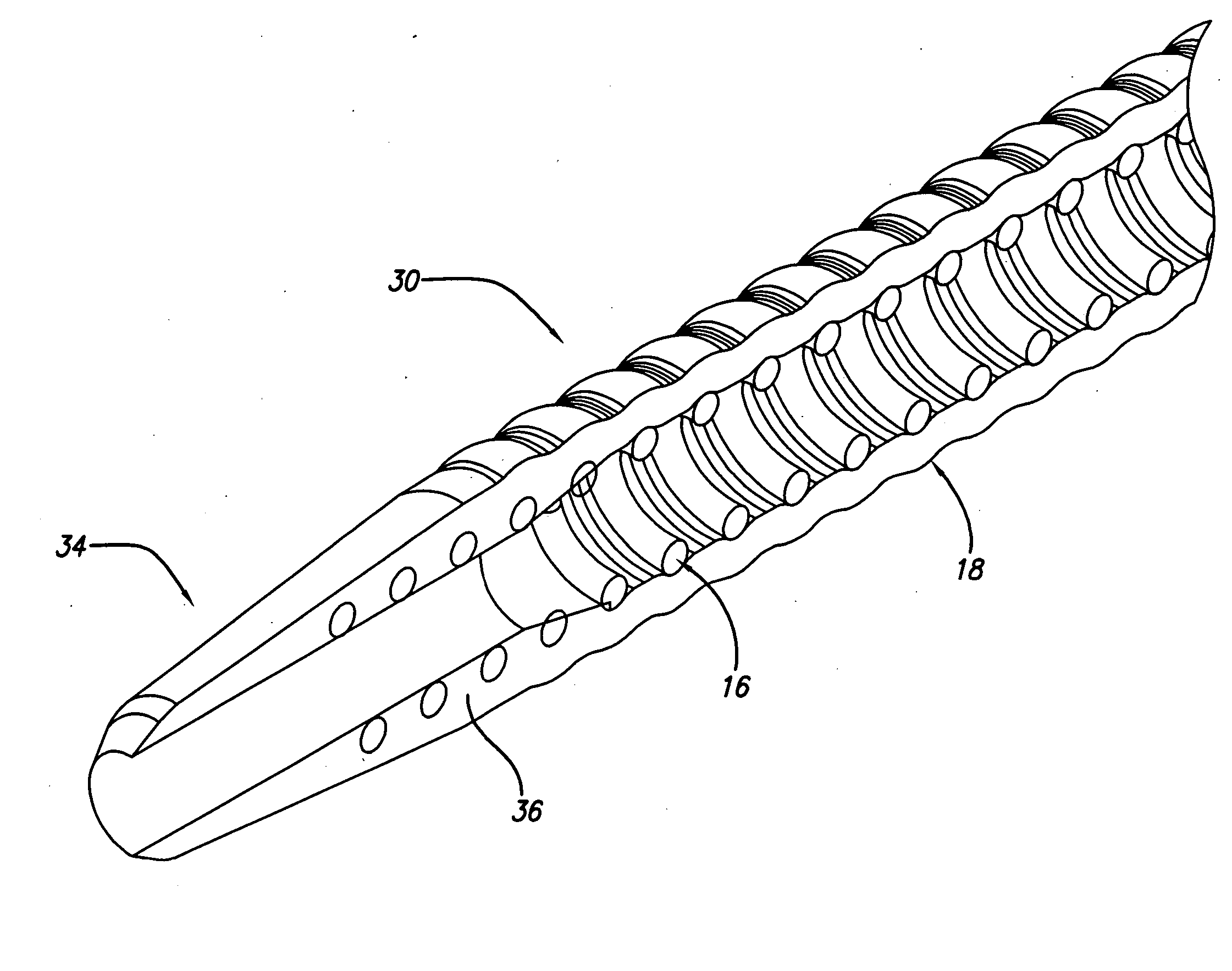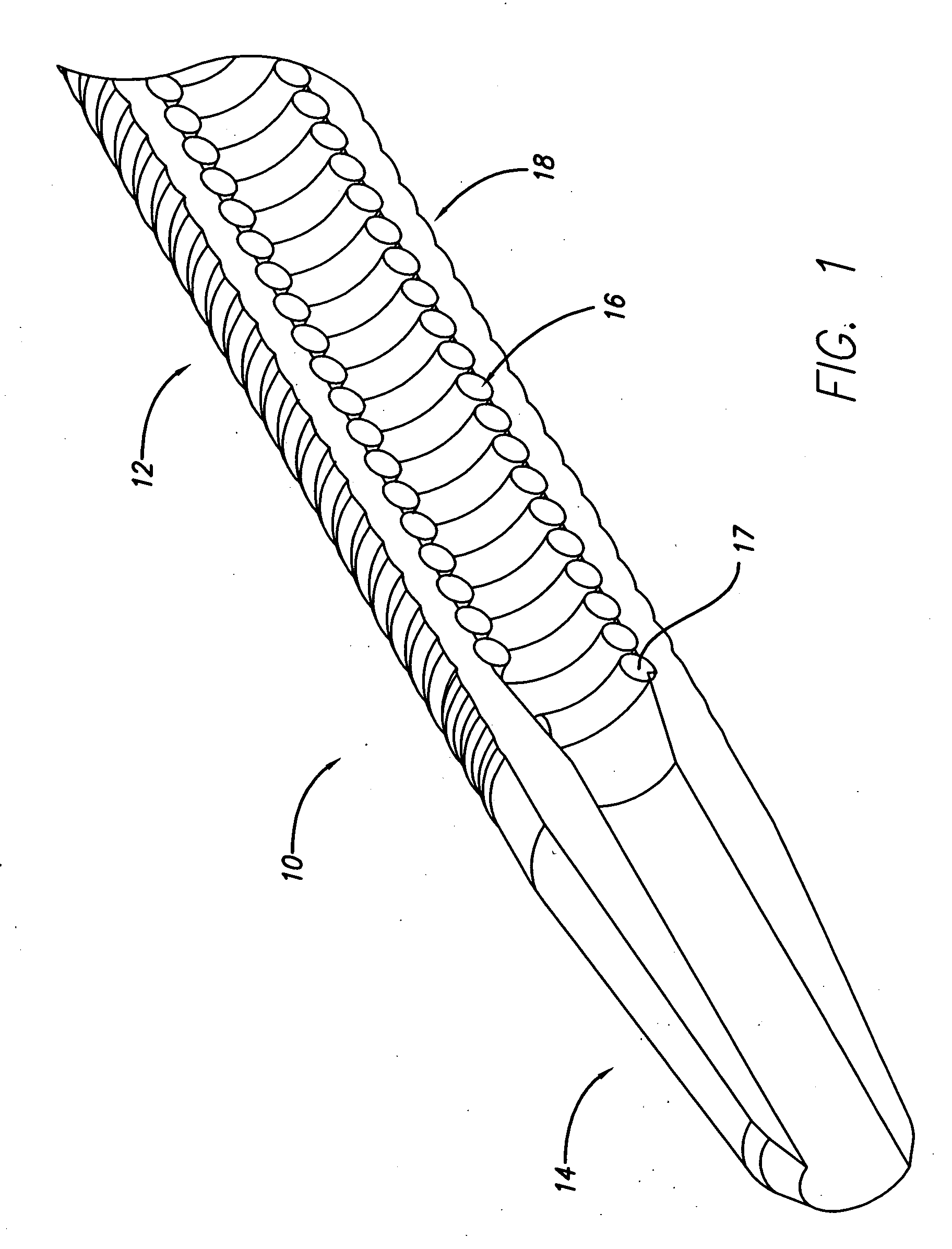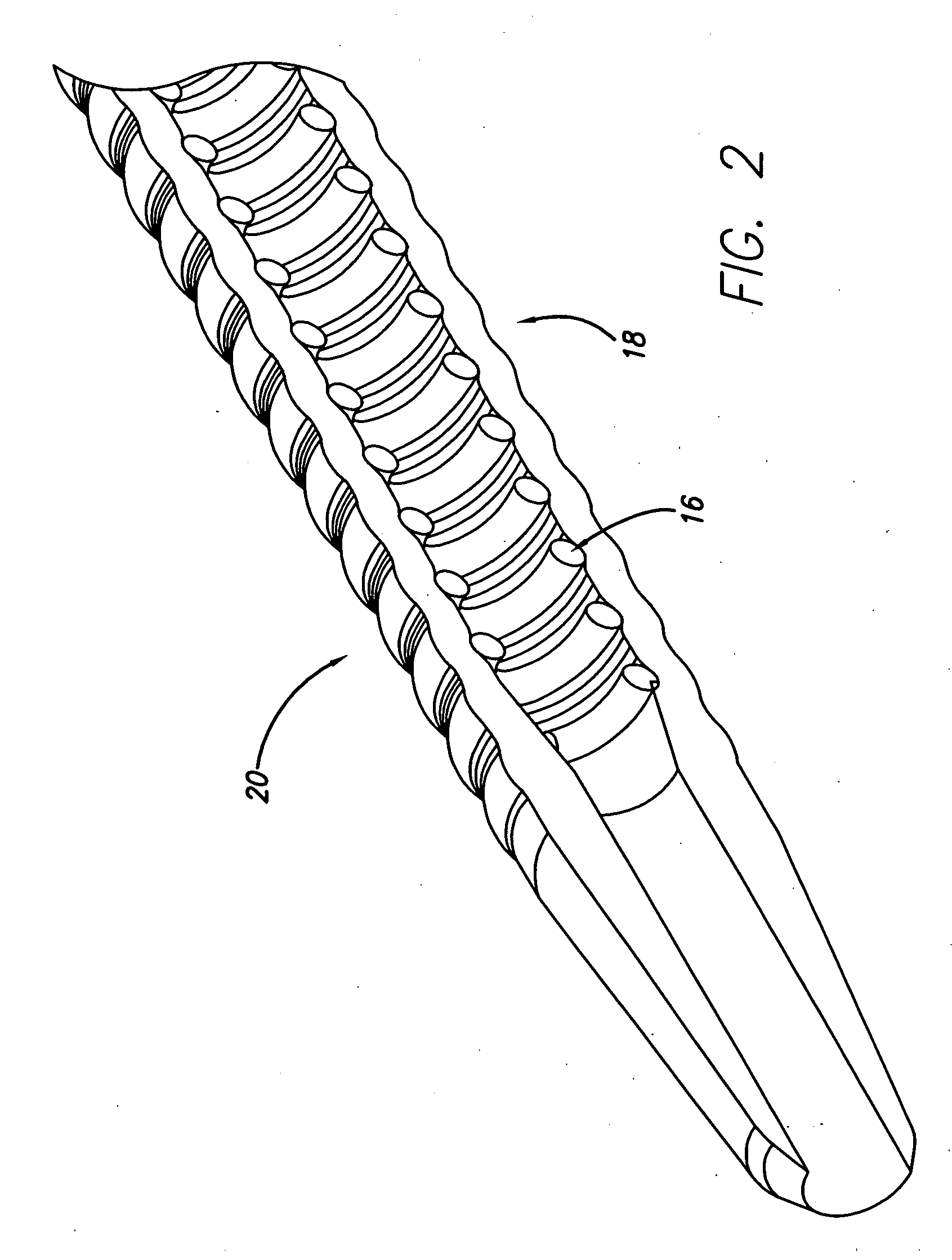Subcutaneous infusion devices
a technology of infusion device and subcutaneous injection, which is applied in the direction of catheter, infusion needle, infusion syringe, etc., can solve the problems of life-threatening problems, small technological advancement of infusion set, user shock, etc., and achieve the effect of preventing accidental needle sticks
- Summary
- Abstract
- Description
- Claims
- Application Information
AI Technical Summary
Benefits of technology
Problems solved by technology
Method used
Image
Examples
Embodiment Construction
in conjunction with the accompanying drawings that are first briefly described.
BRIEF DESCRIPTION OF THE DRAWINGS
[0010]FIG. 1 is a cross-sectional view of a distal end of an embodiment of a cannula.
[0011]FIG. 2 is a cross-sectional view of a distal end of another embodiment of a cannula.
[0012]FIG. 3 is a cross-sectional view of a distal end of yet another embodiment of a cannula.
[0013]FIG. 4 is a cross-sectional view of a distal end of still another embodiment of a cannula.
[0014]FIG. 5 is a perspective view of one embodiment of a coil component of a cannula in isolation.
[0015]FIG. 6 is a perspective view of another embodiment of a coil component of a cannula in isolation.
[0016]FIG. 7 is a perspective view of an embodiment of a perforated cannula.
[0017]FIG. 8 is an enlarged view of the distal end of the cannula of FIG. 7.
[0018]FIG. 9 is a perspective view of another embodiment of a perforated cannula.
[0019]FIG. 10 is an enlarged view of the distal end of the cannula of FIG. ...
PUM
 Login to View More
Login to View More Abstract
Description
Claims
Application Information
 Login to View More
Login to View More - R&D
- Intellectual Property
- Life Sciences
- Materials
- Tech Scout
- Unparalleled Data Quality
- Higher Quality Content
- 60% Fewer Hallucinations
Browse by: Latest US Patents, China's latest patents, Technical Efficacy Thesaurus, Application Domain, Technology Topic, Popular Technical Reports.
© 2025 PatSnap. All rights reserved.Legal|Privacy policy|Modern Slavery Act Transparency Statement|Sitemap|About US| Contact US: help@patsnap.com



